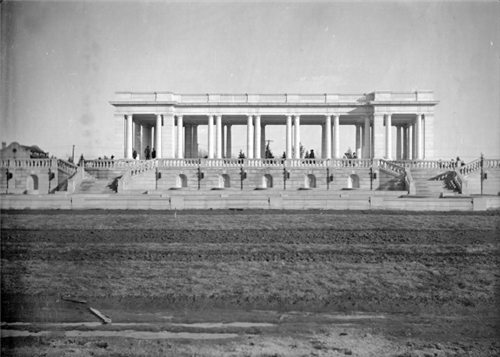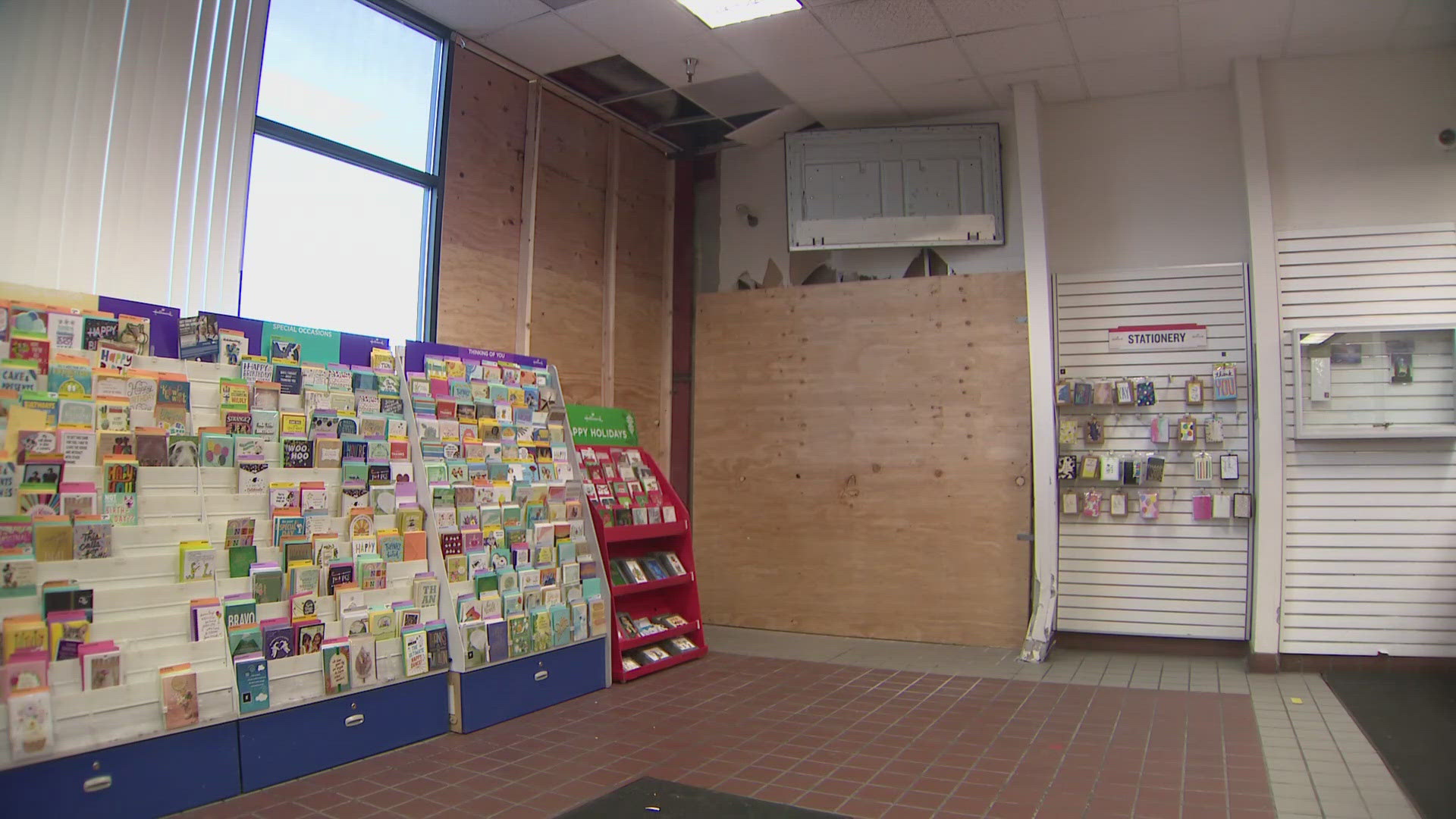DENVER - The 80 acres of Cheesman Park where today dog-walkers, joggers, and outdoor enthusiasts gather, lies on top of what was once Denver's first cemetery. Where the lovely Denver Botanic Gardens sit, used to be a Roman Catholic burial ground.
It was a 90 year journey from cemetery to conservatory.
The land we know today as Cheesman Park, just east of Capitol Hill, was sold to the city of Denver in 1872 for $1.25 an acre for burial purposes.
Long before that, the land had been an Arapahoe Indian burial ground.
The cemetery was eventually divided into sections: Roman Catholic (Mount Calvary), Masonic and Improved Order of Odd Fellows, Jewish (Hebrew Burying and Prayer Ground) and Mount Prospect or Prospect Hill.
Mount Prospect, later called City Cemetery, had areas set aside for burials of paupers, Chinese, and members of the Grand Army of the Republic, a Civil War Union veterans organization.
Among Calvary Cemetery's most famous burials was billionaire-miner Horace A.W. Tabor and his wife "Baby Doe" Tabor.
Denver's City Cemetery had no water for irrigation, and soon became a dry eyesore compared to the Riverside Cemetery, near 52nd and Race, the first to have trees and a lawn thanks to water from the South Platte, and Fairmount Cemetery, which opened in 1890, and was watered by the High Line Canal.
The City Cemetery continued to be used, although in 1880 it was sold to some subdividers who began building homes in the neighborhood, and residents complained it was becoming an eyesore. They complained about the headstones and the condition of the land, which by now held 626 documented bodies beneath it.
Growth in the city of Denver was skyrocketing: From 1880 to 1890 the population increased from 36,629 to 106,713 people. There were 2,328 homes built in 1890.
The cemetery's land and its surroundings were prime building ground.
Complaints mounted over the way bodies were buried, especially those of the poor, sometimes two stacked in a plot together. Rotten remains were dug up and never taken care of.
In an effort to beautify the area, Colorado Senator Henry M. Teller, in 1890, promised congress if they allowed the cemetery land to be transformed into a park, in gratitude, Denver would name it Congress Park. It worked.
Six months later, burials were declared unlawful, although by that time the only poor souls who were laid to rest at City Cemetery were the poor and hospital-stricken.
That summer, families were given 90 days to remove their loved ones remains from the cemetery. Some did, others did not. 788 bodies were moved to Riverside Cemetery.
When Mount Olivet Cemetery opened in 1890, bodies from Calvary Cemetery were transferred there. Burials stopped altogether in 1909, and the City of Denver was paid $80,000 to remove the bodies. The work took months.
In 1893, an undertaker by the name of McGovern was hired by the city to remove the rest of the remains and take them to Riverside Cemetery. Its estimated he left about 4,200 behind.
Since he was being paid by the box, $1.90 in fact, he instructed his workers to use small boxes and distribute remains of corpses into different containers to be moved. The town was outraged as his scheme was uncovered by a local paper and exposed in gruesome detail.
His terrible efforts were never truly finished, and the park land was left with holes, sunken graves, and in disrepair. It is rumored many of those lost and forgotten souls still haunt the park.
Eventually in 1900, improvements began with the hiring of landscape architect Reinhard Schuetze, who also was hired to re-plan City Park and lay out Congress as well as Washington Parks and landscape the capitol building.
The park's name was changed to Cheesman Park in 1907, after Mayor Speer signed an ordinance. Walter S. Cheesman was a prominent drugstore owner and railroad tycoon, and his widow and mother had given the city a sizeable donation to build a marble pavilion in his honor at the park.
By 1913, thousands of the 6,000 bodies buried in the original cemetery had been moved. The remaining area wasn't fenced, and neighborhood kids would play there, where flowers grew abundantly. They would take handles from coffins and even make off with smaller headstones. There was a tale of a grown man who lived for two months in a sunken grave.
The Jewish Cemetery took up ten acres of land east of what is now the north part of the Denver Botanic Gardens. Today, what rests there, perhaps above hundreds of poor souls, is two streets and a parking lot.
Burials began there in 1865, and lasted until 1910. The Jewish community bought land at Riverside Cemetery and Fairmount Cemetery in 1896, so bones were dug up and moved there until 1923.
In 1924, the land that was once their cemetery was bought by water commissioners. During renovations to install sprinklers in 1976, a metal hinge from a child's coffin was discovered by an excavator, among other morbid archives.
Decades later, in 1958, Dr. and Mrs. James Waring bought a house at 909 York Street and gave it to the Denver Botanic Gardens Foundation to become their headquarters. Today, the gardens sits atop land which was once Mount Calvary Cemetery, on the west edge of Cheesman Park today.
In the area where a parking lot sits today, between York and Josephine Streets, was once the 'Pest House,' where those sickened by smallpox were left to die in the 1880s. It was burned to the ground in 1886.
It can be hard to believe an area today that is meticulously maintained and groomed was once in such disrepair that it was the eyesore of a growing city.
Information in the article was gathered from History Colorado and the Denver Public Library. Have an idea for something we should research? Email us!
(© 2015 KUSA)


